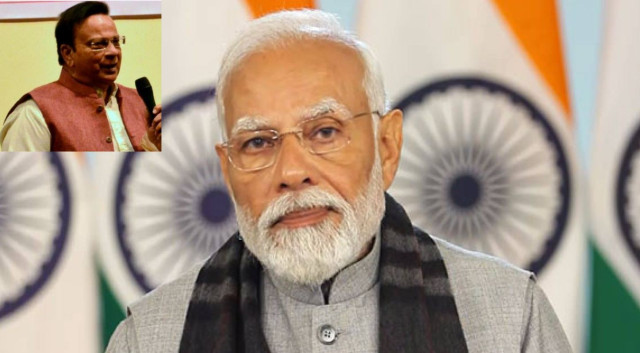Love to Separation: Understanding the Surge in Divorce Rates in India- A Deep Psychological Research on Why Indian Marriages are Breaking
- Posted on March 27, 2025
- Lifestyle
- By Madhukari Roy
- 267 Views
Indian divorce rates are rising due to changing societal norms, financial independence, and evolving relationship expectations. Women and men alike are prioritizing emotional well-being over traditional values. Influences include celebrity divorces, the YOLO mindset post-COVID, and challenges of the sandwich generation. Marriage in India is undergoing a major transformation.

Love to Separation: Understanding the Surge in Divorce Rates in India
A Deep Psychological Research on Why Indian Marriages are Breaking
Indian families are facing a paradigm shift in how marriages are breaking and why Divorce cases are on the rise. Divorce is no longer the last option but a conscious decision that many couples take for happiness, dignity, and satisfaction. Along with changing priorities, economic independence, and social sentiments, Indians, especially women, are looking at traditional thinking about marriage in a new way.
But why are these separations happening?
Why are people looking to get rid of these relationships?
What are the reasons behind this recent rising trend of divorce?
Let us dive deeper into the factors - psychological, physical, social, and economic. Increasingly, Indians are opting for divorce instead of compromise, questioning the future of relationships in India, which historically had a low divorce rate of just 1%. Some more real-time reports and statistics are here, which might blow your mind.
Reports and Surveys
-
United Nations Report: The world was shocked by a report by the United Nations, which highlighted a growing trend of separations in the present times.
-
Periodic Labour Force Survey: Data indicate that the proportion of divorced or separated individuals has increased, even in rural India.
-
Bumble Survey: 81% of Indian women prefer staying single rather than being in an unhappy marriage.
-
Investopedia Study: 65% of newly married Indian couples do not wish to have children, further challenging traditional marital expectations.
This paradigm shift in mindset reflects a social transformation driven by financial independence, personal aspirations, and evolving gender roles, amongst other factors, which we will elaborate in this deeply researched report.
The New Age of Marriage: What’s Changing?
In earlier generations, marriage was primarily about duty, family honor, family values, and social stability. Couples stayed in marriage, sacrificing personal happiness for the sake of these values, care for children and social ethics and morality. Today, individuals view marriage differently. They seek companionship, mutual respect, emotional intimacy, and personal growth and no more carry the so-called burden of family values and social fear of standing out.
1. Financial Independence: The Game Changer
One of the most significant factors driving divorce in India is financial independence, particularly among women. In the past, many women were financially dependent on their husbands, making separation nearly impossible. However, today, with women comprising a significant part of the workforce, they have the financial freedom, which gives them the much-needed courage to walk out of unhappy marriages.
Parents, too, are prioritizing their daughters' education and careers over early marriages. They don’t put pressure on their daughters for early marriage rather, they give them freedom and independence to complete their studies, get a good job and then chose a suitable partner as per the need of the job profile or social status they so achieve without any obligation to the demands and choices of their parents. This particular psychological maturity on the part of the parents bears a long-lasting effect on how these daughters proceed for their married life.
Expert Insight:
"The pressure of getting married at the right age is reducing. Women are no longer seen as a burden. They make their own decisions," says relationship coach Deepika Rathore.
2. The Impact of Celebs
Recent high-profile divorces, such as that between Aamir Khan and Kiran Rao, Samantha Ruth Prabhu and Naga Chaitanya, and Shikhar Dhawan and Ayesha Mukherji, demonstrate how celebrities shape how society perceives them. In Indian society, common man consider celebrities as their role models. Any act done by these role models carries a deep influence on the psyche of society, consciously or subconsciously.
Psychiatrist Dr. Alpes Panchal explains:
"Celebrities are role models for many. When they choose divorce, it normalizes the idea that marriage is not a life sentence. If two people are unhappy, they can part ways with dignity."
3. The YOLO (You Only Live Once) Mindset
The COVID-19 pandemic led many people to re-evaluate their lives, relationships, and priorities.
The realization that life is short pushed many individuals to seek happiness, even if it meant breaking away from unhappy marriages. Covid-19 saw many young and otherwise healthy people die and shocked their loved ones. This forced the society to reach on a conclusion that life has no guarantee. It can end any time. There is no second retake in life when it comes to the question of life and death. So they changed their priorities. Many people switched careers, pursued passions, and prioritized personal well-being over societal expectations.
Real-Life Story
Abhinav Singh (name changed), a 45-year-old businessman, was married for 21 years before deciding to divorce.
"We fought every day. I stayed for my daughter, but the environment was toxic. When she turned 18, I decided to move out. It was the toughest yet the best decision of my life.”
There are many more high-profile real-life examples of people getting a divorce even after staying together for a reasonably long period in married life.
Why Are More Men Also Opting for Divorce?
While much of the focus is on women seeking divorce, many men are also walking away from unhappy marriages.
In traditional setups, men were expected to be the breadwinners, while women took care of the household. Today, dual-income households exist, but the emotional and domestic responsibilities are often unequal. Many men feel overwhelmed by expectations and lack emotional support.
Case Study
Aniket Sharma, a financial advisor, ended his marriage after seven years.
"I contributed as much as I could, even with a full-time job. But there was a constant emotional pressure. No matter what I did, it was never enough. Divorce was my only way out."
The Challenges: Is Divorce Really That Easy?
While divorce is becoming more common, it is not always smooth sailing. Let us understand the overall scenario that covers the life after divorce in the form of challenges:
1. Social Stigma Still Exists
Despite changing attitudes, divorcees (especially women) still face judgment. Relatives and society often label divorced women as “failures”. The pressure to remarry remains high, especially for women in their 30s and 40s.
2. Emotional and Psychological Impact
Divorce is not just a legal process; it is an emotional rollercoaster.
Many individuals experience loneliness, depression, and anxiety post-divorce. They may take a longer time to heal and move on after a divorce.
Children of divorced parents may struggle with emotional distress, though in some cases, it is healthier than staying in a toxic household.
Psychotherapist Khushi Gupta points out:
"Divorce is painful, but staying in an unhappy marriage is worse. Healing takes time, and it is essential to prioritize emotional well-being."
3. Financial and Legal Hurdles
Divorce can be expensive, with legal fees, alimony, and child custody battles adding to the stress.
Women who were stay-at-home mothers often struggled financially post-divorce.
The legal process in India is time-consuming, making separation complicated.
What’s Next? The Future of Marriage in India
With rising divorce rates, will marriage become obsolete in India? Not necessarily. Instead, the concept of marriage is evolving and its taking shape with the changing social and financial behaviour of people.
More couples are opting for premarital agreements to provide financial clarity. Live-in relationships are gaining acceptability, especially in metropolitan India.
The idea of singlehood is being celebrated, with individuals choosing self-growth over forced companionship.
Ranjana Kumari, a social activist, feels that being single will grow more common over time.
"Loneliness may be a challenge in old age, but with nuclear families becoming the norm, we must redefine emotional fulfillment."
India's Sandwich Generation
India's sandwich generation suffers from financial insecurity and emotional stress.
Rahul Bhargava, 42, works at a company in Gurugram. Besides that he is also caring for his aging parents and helping his teenage daughter with her schoolwork. He is overburdened and financially worried because of his father's medical bills, growing educational fees for his daughter, and anxieties about his own future. As part of India's 'Sandwich Generation', he, along with many others, is caught between supporting elderly parents and raising children, with 60% feeling unprepared for their future. This struggle is depicted in the OTT show Family Man through the character Srikant Tiwari.
The Burden of Dual Responsibilities
The term ‘sandwich generation’ originally described those caring for both elderly parents and dependent children. In India, where family responsibilities run deep, this challenge is even greater. Unlike Western countries, where government-backed social security provides some relief, Indians rely heavily on personal savings to manage their parents’ medical expenses and their children’s education. A single health crisis can wipe out years of financial planning.
Bhavna Sharma, a single mother, faced a crisis when her mother was diagnosed with leukemia in 2019, depleting her savings and forcing her to take a loan against her home, which she is still repaying.
"Her post-recovery checkups cost a fortune, and my son’s education expenses leave me with little for myself,” she says.
Mental and Emotional Toll
Financial stress isn’t the only burden. Caring for others takes a heavy emotional toll. The constant alternation between work, childcare, and eldercare leaves little time for self-care, which leads to anxiety and guilt.
Delhi-based clinical psychologist Shruti Mokashi explains:
"Many in the sandwich generation feel they are not doing enough. They experience guilt and helplessness, which can lead to anxiety and chronic stress."
Ankit Jhalana, a 45-year-old banking professional in Mumbai, feels disconnected from his family.
"I hardly see my wife and children. When I get home, they're already asleep, and when they wake up to go to school, I'm still in bed." My wife and I only talk about bills and responsibilities, nothing else.”
Gujarat-based psychologist Bhupendra Sharma suggests that families should share caregiving responsibilities to avoid overwhelming one person.
"Self-care is crucial. Seeking external support, like hiring help or involving siblings, can ease the burden,” he says.
Managing the Financial Crunch
While emotional support is important, strategic financial planning is key to reducing stress.
Indrani Mahato, a financial advisor in Delhi, advises:
"Start planning early. Focus on long-term financial stability rather than immediate expenses."
Atool Sinha, another member of the sandwich generation, successfully navigated this challenge.
"I secured my family with health insurance and made difficult decisions, like having only one child to ensure financial stability. It wasn't easy at first, but it was the right decision,” she says.
A New Era of Relationships?
Divorce in India is not just about breaking marriages; it is about breaking old mindsets. It represents:
-
Personal growth over societal pressure
-
Financial independence over-dependence
-
Respect and happiness over compromise
Marriage, once an unbreakable bond, is now being redefined. People are no longer afraid to walk away when love, trust, and respect fade. And perhaps, that’s a sign of progress—not failure.
While divorce rates in India are increasing, it is vital to recognize that the concept of marriage itself is changing. Unlike in the past, people increasingly put joy, respect, and emotional well-being ahead of societal standards. However, this change presents new issues, particularly in terms of emotional equilibrium, welfare of kids, and traditional family values.
Thereafter, individual happiness and family values must be in equilibrium at the social yardstick.
Education on relationships, mental health, and economic freedom can be used by people so that they are not clueless about making decisions.
Divorce is a failure, but divorce should be treated as an option for all betterment if one truly accepts it after putting in the effort and fighting for life not to get divorced from marriage.
Marriage, as we know, is being redefined by Indian society at its turning point. Whether that change will be wholly for the better or worse, no one knows yet, though. What is clear, though, is that the Indian concepts of marriage with other things—love and commitment—are under a lot of transformation.




